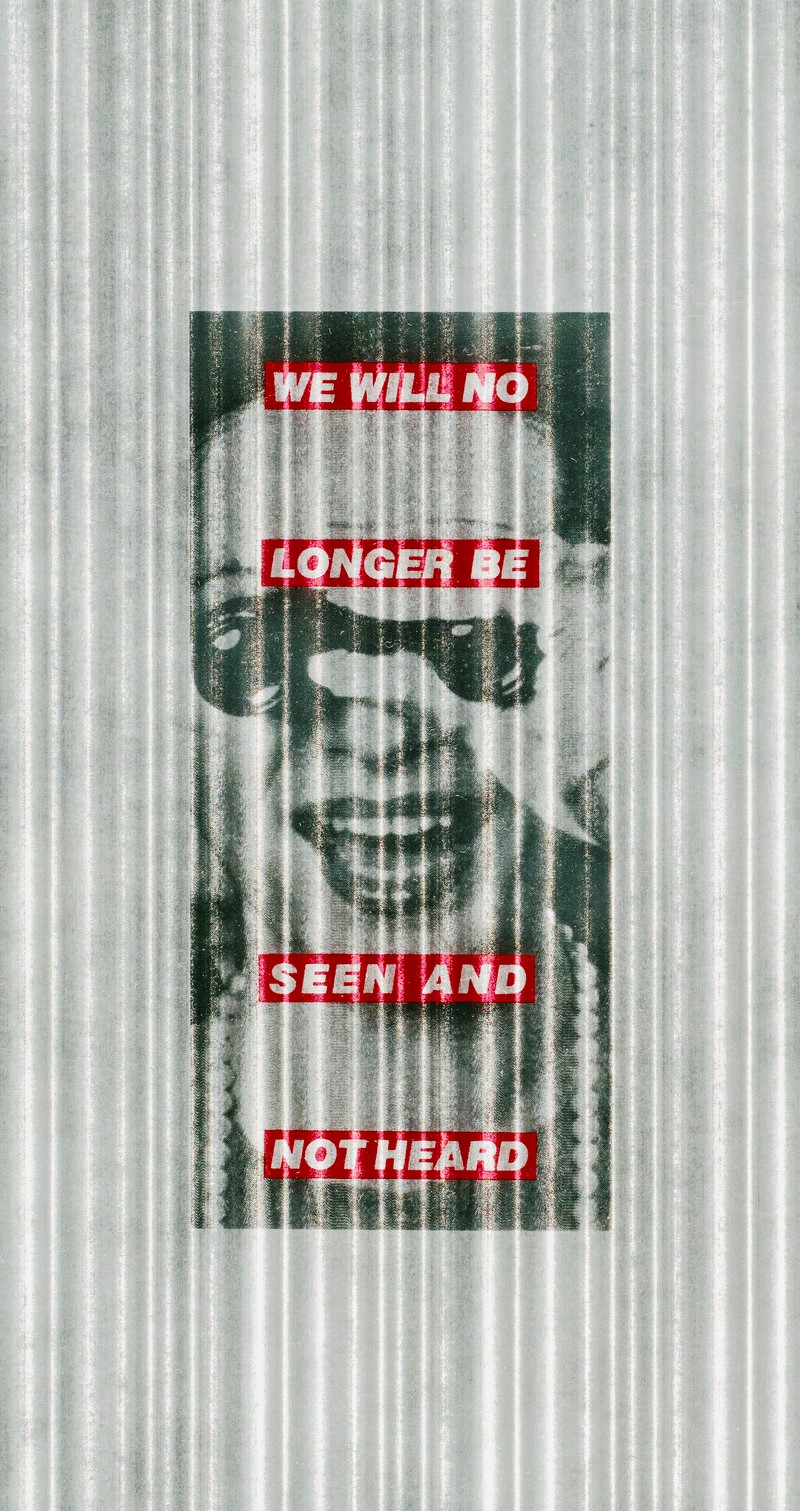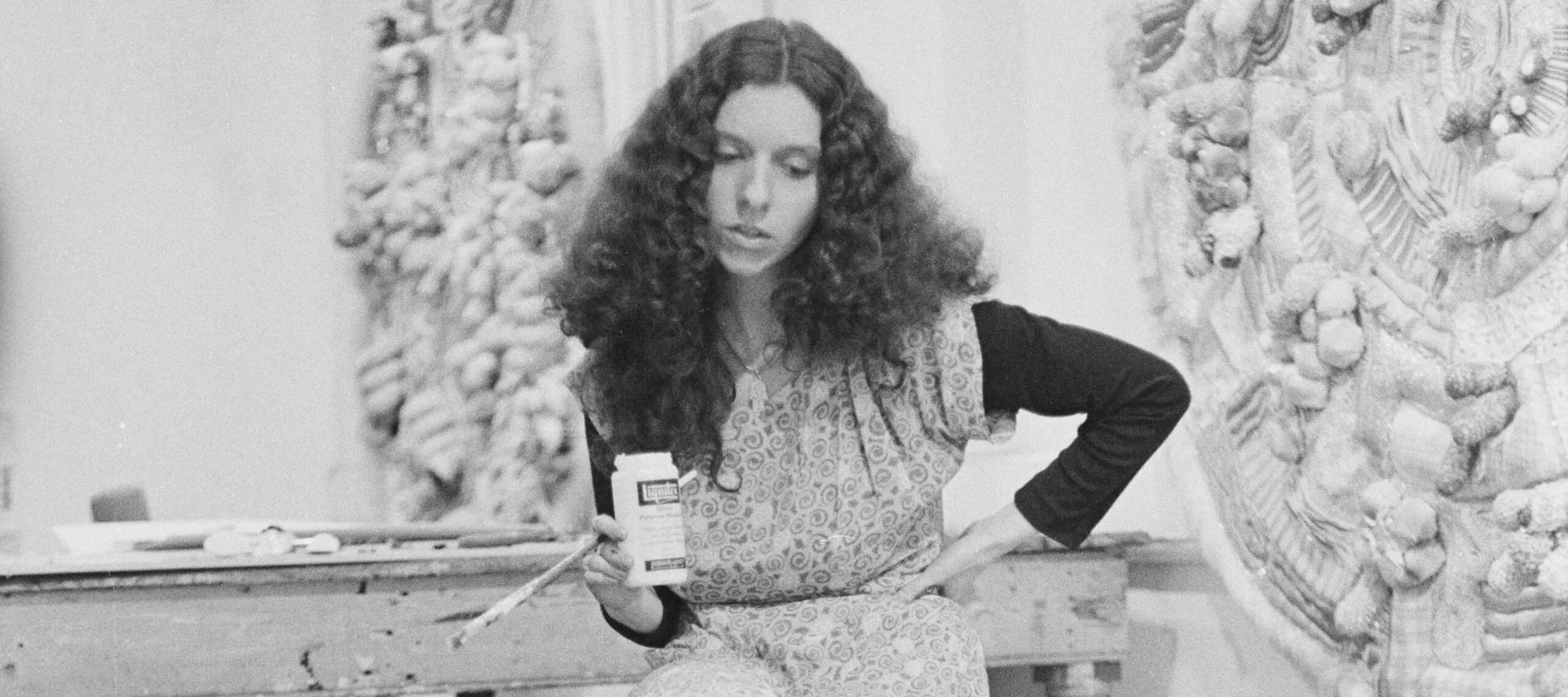Happy birthday to Barbara Kruger, who was born on this day in 1945! Impress your friends with five fast facts about the conceptual artist, whose work Untitled (We Will No Longer Be Seen and Not Heard) (1992) is part of NMWA’s collection.
1. In Her Own Words
“I was born in Newark, New Jersey, a very poor city which was plagued by poverty and deteriorating race relations. I grew up in a working-class home…a three-room apartment in a Black neighborhood. That experience determined very much what my work later became—my childhood informed my ideas about power, control, hierarchy, and marginalization,” Kruger stated.
2. Making Meaning
Kruger began her career in the publishing industry at Condé Nast, where she was a designer at Mademoiselle; she also freelanced as a book cover designer and fashion illustrator. These experiences informed her artistic practice, which uses the visual language of marketing but pointedly upends its meaning. Kruger’s art uses direct statements—often subversive, bold, philosophical, and even humorous—paired with found imagery to communicate feminist and anti-capitalist messaging.

3. Art for the People
“The availability of my work is important to me,” the artist has said. As such, you are just as likely to find Kruger’s work hanging on the wall of a museum as you are to experience it out in the world. Kruger has installed her works on buses and bus shelters, billboards, building façades, a skate park, the stage set for a ballet, the lobby and escalators of the Hirshhorn Museum, magazine covers, newspapers, and even New York City MetroCards, among others.
4. Supremely Uncool
Streetwear clothing brand Supreme has never denied that its logo was “inspired” by Kruger’s signature white-type-on-red text treatment—and for decades Kruger did not address the blatant copy. However, in 2013, after Supreme sued a rival clothing company for infringing on its logo, Kruger finally spoke her mind: “What a ridiculous clusterfuck of totally uncool jokers. I make my work about this kind of sadly foolish farce.” In 2017, she staged a visual performance, Untitled (The Drop), a not-so-subtle swipe at the brand.
5. Imagine Better
In the summer of 2020, during protests for racial justice in the United States, CNN aired footage of protestors handcuffed and lined up against Kruger’s Hollywood mural Untitled (Questions) (2020), which asks “Who buys the con?” Kruger’s art asks viewers to think more critically about their belief systems, habits, and place in society and the world. “It’s a failure of imagination that has brought us to this brutal and raw moment,” she said in 2017.
